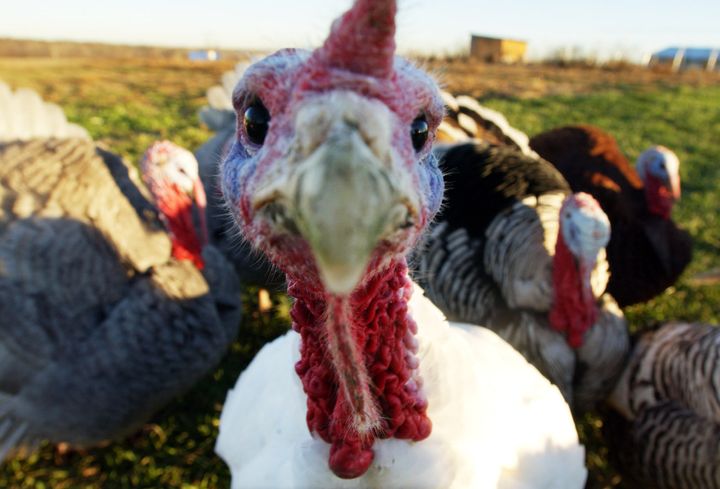
My good friends in the Catskills look forward to turkey hunting season. They shoot only what they can eat and make many delicious meals from one bird. Most of us don't hunt for our Thanksgiving turkey, unless you count as hunting our quest for the perfect bird at farmers’ markets and supermarkets.
Suffice it to say, the Thanksgiving turkey you are likely to find today in the supermarket is nothing like the wild turkey my friends hunt, and in fact it's quite different from what your grandparents ate 50 years ago.
Today, 99% of all turkeys raised in the U.S. are the "Broadbreasted White" variety (sometimes also referred to as the "Large White"). Raised in confinement in extremely crowded conditions on factory farms, "broadbreasted whites" are fed a steady diet of grain and supplements like antibiotics, rather than the grubs, bugs and grasses they should eat and could eat if they were allowed outdoors.
As their name implies, Broadbreasted White turkeys are valued for their large white meaty breasts, which breeding has enhanced, though the process has rendered them virtually infertile. According to the Food and Agriculture Organization of the United Nations, without artificial insemination performed by humans, this variety of bird would become extinct in just one generation.
If turkey is on your holiday menu, what then should you buy? When looking for the right bird, or any poultry for that matter, there is much to consider. But to make the best choice, follow these simple steps.